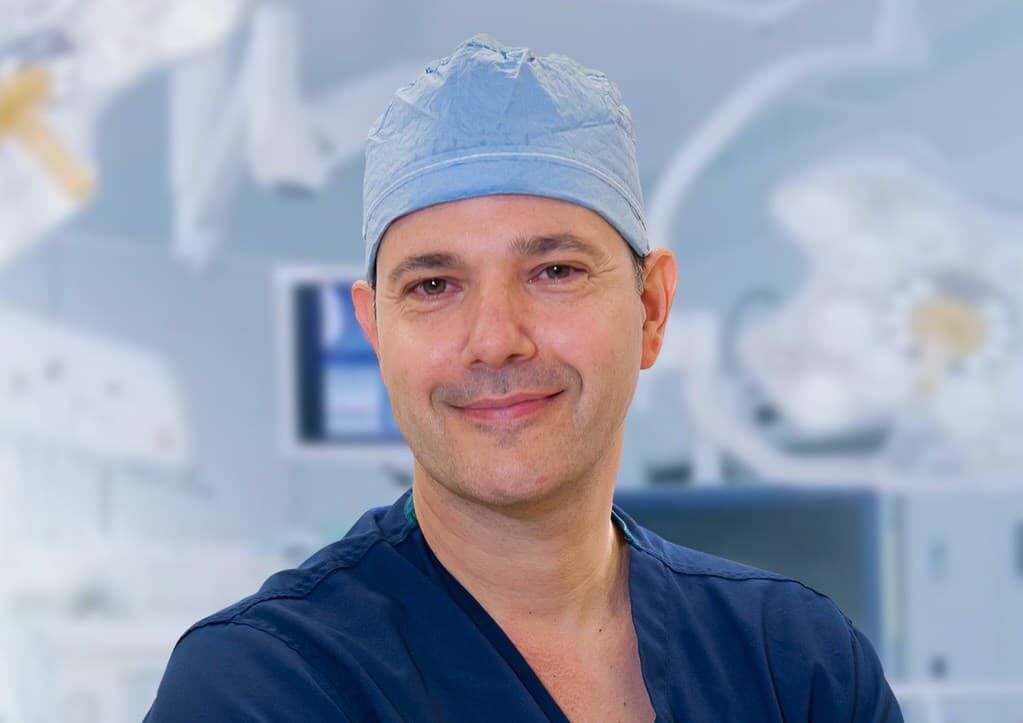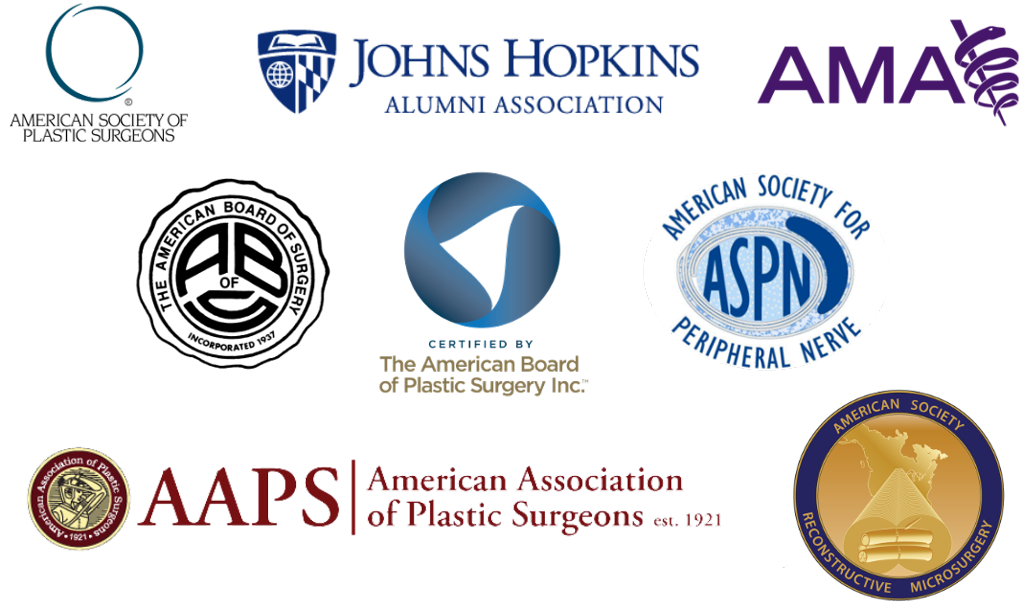Shai M. Rozen, M.D., F.A.C.S.
1801 Inwood Road
Dallas, TX 75390
Phone: (214) 645-2353
Monday–Friday: 8 a.m.–5 p.m.
Facelift in Dallas, TX
Surgeries improving facial appearance have been around for over a century. Early facelift techniques simply removed excess skin in different areas of the face. Subsequent techniques lifted and removed varying degrees of facial skin from in front of the ear, often closing the skin under tension. These techniques of the past usually resulted in an unnatural pulled or “windswept” look that was easily identifiable and frequently did not have a lasting effect.
Today’s facelifts are very different. Instead of simply stretching lax skin, modern facelifts, when well-executed, are highly technical procedures that address the deeper structures of the face. If done accurately, a facelift should restore a naturally refreshed and more youthful-looking appearance that is long lasting, while avoiding a “surgical look.”
Rather than tightening the skin, they gently reposition, lift, and redefine facial areas, such as the cheek and neckline, without creating tension on the skin. These procedures reposition the SMAS (superficial musculoaponeurotic system), a distinct surgical layer that lies between the skin and deeper facial structures, which effectively elevates different facial regions and maintains their position. These techniques achieve the following two major goals in one surgery:
- Lifting, defining, and maintaining important aesthetic areas of the face, such as the cheek and jawline
- Removing excess skin without applying tension on it, thus avoiding the surgical look and unsightly scars.
Intimate knowledge of the facial anatomy, including the skin, ligaments, muscles, and most importantly, the facial nerve, is critical for obtaining aesthetic, natural, long-lasting results without compromising safety. This page provides a quick review of facelift types, emphasizing those performed by Dr. Shai Rozen. He is a board-certified plastic surgeon who performs facelift surgery in Dallas using refined expertise gained from his specialization in facial paralysis correction.
What are the benefits of a facelift?
Simply put, the goal of a facelift is to restore a natural, rejuvenated, and youthful look that is long-lasting. Facelifts address several layers of the face, allowing safe repositioning of critical aesthetic areas such as the cheek and neckline and avoiding excessive stretch on the skin. Benefits include:
- Elevating and properly repositioning sagging facial tissues.
- Restoring the cheek position and harmonizing the cheek-eyelid transition.
- Improving jawline definition.
- Restoring facial volume.
- Removing excess skin without tension to avoid a surgical look and the risk of bad scarring.
When performing facelift surgery, Dr. Rozen strives to restore a more youthful appearance that looks natural, not operated on, and makes the patient look better and feel more confident.
What are the different types of facelifts?
There are many types of facelifts. Some techniques promise fast results and recovery, yet the effects are often short-lasting and look unnatural. Although aging affects people differently and anatomical variations exist in each person, a good facelift should provide a natural-looking, long-lasting result while prioritizing safety.
Dr. Rozen is among the most experienced facial nerve surgeons in the world, with intricate knowledge of facial anatomy. He performs SMAS-based facelift techniques, mainly the high SMAS facelift with variations to fit individual patient needs and aesthetics, with attention to aesthetics and safety. In some cases, he performs the composite (deep plane) facelift based on the patient’s specific anatomy.
High SMAS Facelift
This procedure improves cheek volume and elevation and achieves a smoother transition between the cheek and lower eyelid, especially when combined with lower eyelid surgery while improving jawline definition. In this procedure, Dr. Rozen partially separates the skin from the underlying SMAS, allowing him to lift the cheek in a more vertical direction while redraping the skin slightly more to the side in its natural position. Benefits of the high SMAS technique include:
- Lifting the cheeks more effectively than other SMAS techniques.
- Allowing a more youthful, natural, and improved transition between the cheek and lower eyelid.
- Removing skin without tension.
Composite (Deep Plane) Facelift
This procedure lifts the face in a sub-SMAS layer similar to the high SMAS facelift but does so more as a composite of the SMAS and skin layers rather than separately. The composite facelift may be useful in patients with very thin skin, naturally high cheek bones, and well-defined jawlines, as well as in other select patients.
What are the benefits of the high SMAS and composite lift techniques?
Both of these techniques incorporate the mobilization of the deeper SMAS layer of the face, providing several advantages, including:
- Repositioning facial volume where needed, such as the cheek (malar) area.
- Providing a more natural transition between the eyelid and cheek areas.
- Improving definition of the jawline.
- Minimizing tension along the incision to avoid an unnatural, stretched (windswept) look and improve scar healing.
Dr. Shai Rozen
Dr. Rozen's expertise in facial paralysis surgery makes him uniquely qualified as a plastic surgeon. Patients benefit from his:
- In-depth knowledge of facial nerves and anatomy and their relationships to facial appearance, expression, and sensation.
- Refined eye for facial symmetry and aesthetics.
- Adept surgical skills refined by performing highly complex microsurgical facial procedures.
- Patient-centered approach that values the individual's unique needs, concerns, and aesthetic goals.

Will a facelift eliminate all facial wrinkles?
Facelifts decrease but may not eliminate all facial wrinkles. To smooth and rejuvenate the skin, Dr. Rozen may recommend complementing your facelift with any of the following nonsurgical cosmetic procedures:
- BOTOX® Cosmetic injections
- Dermal filler injections
- Skin resurfacing procedures such as chemical peels or laser treatments
Can a facelift be performed with other procedures?
Yes. Dr. Rozen often combines facelift surgery with other facial plastic surgery procedures to provide comprehensive facial rejuvenation. In fact, this is more the rule than the exception. To give the entire face a harmonious look that is optimal and individualized to the patient, Dr. Rozen most frequently combines facelifts with the following procedures:
- Neck lift
- Brow lift
- Eyelid surgery
- Fat transfer
What is recovery like after a facelift?
Facelift patients typically experience mild to moderate discomfort controlled with prescription medication. Swelling, bruising, tightness, and numbness are all normal. While experiences vary, a facelift recovery generally proceeds along the following timeline:
Recovery Timeline
- 1 to 7 days: Drains are removed.
- 7 to 10 days: Sutures are removed.
- 2 weeks: Resume normal daily activities, work, and light exercise. Bruising fades and can be covered with makeup.
- 6 weeks: Resume more strenuous exercise and activities.
- 3 months: Swelling fades significantly.
- 6 months: Final results attained. Swelling resolves. Normal sensation mostly returns as numbness in the cheek and ear abates.
How long do facelift results last?
The longevity of results depends on factors such as age, skin quality, weight, and surgical technique. In general, the results of a high SMAS facelift should last for close to 10 years. Patients who maintain a healthy lifestyle, avoid significant weight fluctuations, do not smoke, and practice good sun protection typically extend the life of their results.
Next Steps
For more information about facelift surgery and other facial rejuvenation procedures, request a consultation to meet with Dr. Rozen at UT Southwestern or to schedule a virtual consultation.


